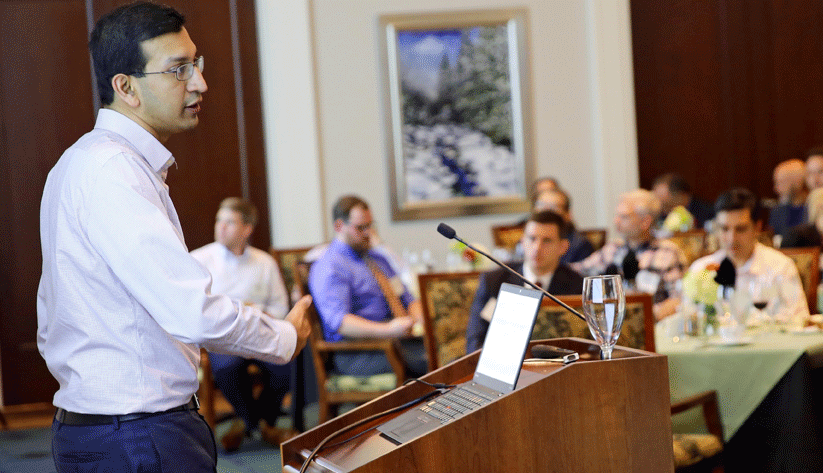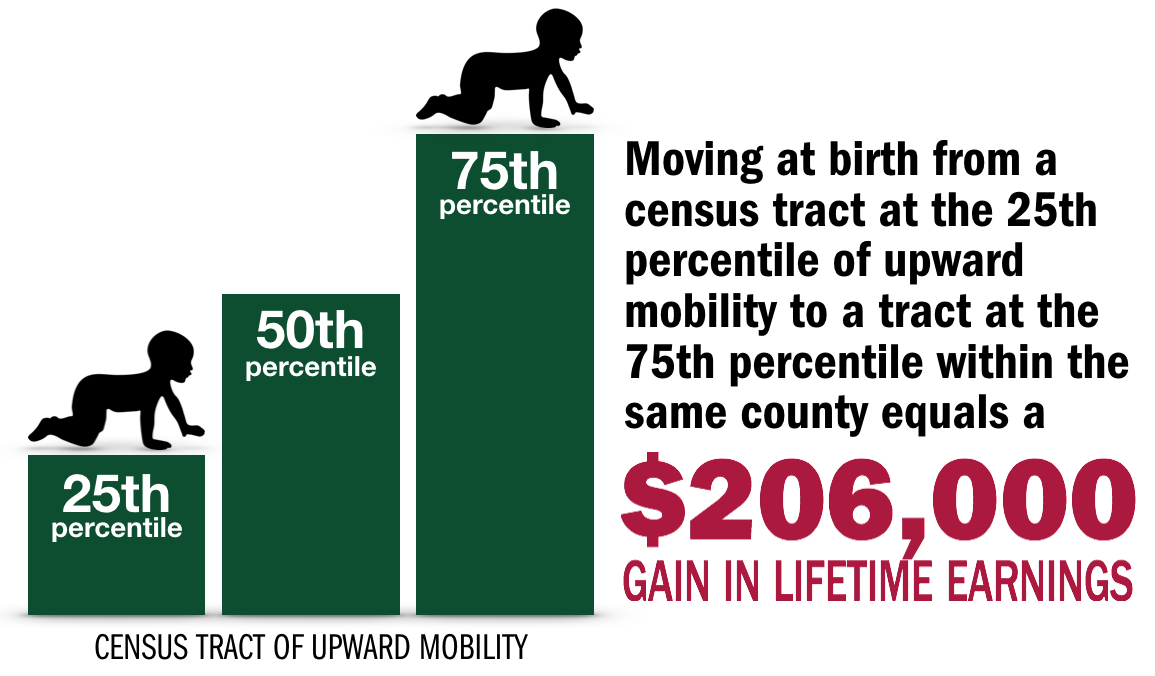
Raj Chetty sees himself as a product of the American dream. An immigrant himself, Chetty moved here with his parents from India when he was 9 years old. The Harvard economist is probably the nation's leading authority on the erosion of kids' chances to do better than their parents.
His groundbreaking research on economic mobility across generations generally paints a grim picture. However, the work also holds great promise to inform policies to improve the fortunes of children who grow up in American neighborhoods that offer limited socioeconomic opportunity.
In October, Chetty visited the Federal Reserve Bank of Atlanta to discuss his work at the ninth annual employment conference sponsored by the Bank's Center for Human Capital Studies. He described the recently released Opportunity Atlas and other aspects of his research during a dinner speech and an Economy Matters podcast episode with Atlanta Fed president Raphael Bostic. (You can also read about some of his earlier research in our Real Estate Research blog.)
Chetty and his research partners unveiled the Opportunity Atlas on October 1. It distills troves of data into information on upward mobility for each of the nation's 70,000 census tracts. Each tract generally has a population of between 1,200 and 8,000, the optimum size being 4,000 people, according to the Census Bureau. The Opportunity Atlas details how kids fare as adults in measures including income, teenage birth rates, and incarceration rates, broken down by gender, race, and parental income.

The availability of vast amounts of data allows Chetty and his colleagues to zoom in on geographic areas with unprecedented precision. And it means the science in general is more empirical and precise, and less reliant on theorizing about potential outcomes based on models, Chetty explained. "It's now about actually saying, ‘Yes, this does happen or doesn't happen.' And I think that's incredibly valuable."
Big differences in adjacent neighborhoods
That precision has led to startling discoveries.
For example, Chetty and his colleagues have found that African American males who grow up in the lowest-income families in Los Angeles's Watts area have an average annual income of $6,200 in their mid-30s, and 44 percent were incarcerated on a single day in 2010, more than were employed. Yet just two miles away in Compton, the incarceration rate among black men from similar families was just 6.2 percent and average incomes, while still low, were double those in Watts. Similarly, side-by-side census tracts in downtown Atlanta and the Old Fourth Ward district show incarceration rates for black males from low-income families of 25 percent versus 5 percent, and an average annual income of $9,400 versus $16,000.
Mobility is particularly difficult for African American males across the country, according to Chetty's research.
Another revelation from Chetty's work is that robust employment growth alone does not create widespread economic mobility. Many metropolitan areas in the Southeast such as Atlanta and Charlotte, for instance, have been dynamic jobs generators yet rank among the least mobile places in the country.
Several currents are at work. Booming metros are talent magnets, as people move to cities like Atlanta for high-paying jobs. However, the children growing up there are not necessarily reaping much benefit, Chetty pointed out. In fact, proximity to lots of jobs is not highly correlated with high rates of mobility. What appears to matter more for children is living near large numbers of employed adults. Chetty adds that access to role models, strong family structures, and other elements of "social capital" are critical to economic mobility.
"What really seems to matter is conditions in your (census) tract," Chetty said, "suggesting we should think of neighborhoods at a very granular level."
This granularity could come into play, for example, in targeting tax policies and funding for programs like Head Start to achieve maximum impact. Or, as Chetty discussed with Bostic, public agencies could encourage housing voucher recipients to move to areas with better mobility prospects.
Chetty's institute at Harvard, Opportunity Insights, is working on just such an experiment in Seattle. There, the group works with local housing authorities to help families with young children that receive a housing choice voucher move to "opportunity neighborhoods." Chetty defines those as affordable but still offering good economic mobility.
It also matters when kids move. The longer they live in a neighborhood with little opportunity, the worse off they tend to be as adults.
Fading American dream
The starting point for much of Chetty's work is his finding that the American dream of economic mobility has dimmed. About 90 percent of Americans born in the 1940s and '50s earned more than their parents did. However, only half of children born in the 1980s do so (see the chart).
Two primary factors are to blame, Chetty explained. First, overall economic growth has slowed. Over the past 30 years, U.S. gross domestic product increased 1 percentage point less each year on average than during the middle of the 20th century. So the overall pie has grown more slowly, accounting for about a third of diminished mobility, Chetty said.
The second force behind diminished mobility is a fundamental change in the distribution of economic growth. Most of the recent gains in income have accrued to people and families at the top of the income scale, he noted. Changes in the distribution of economic growth, he and his fellow researchers found, account for about two-thirds of the decline in economic mobility.
From there, the logical question is why wage growth for lower- and middle-income Americans has weakened since the 1970s. Some of the slowing has resulted from macroeconomic factors such as increased trade, globalization, and automation, Chetty said.
Also importantly, his research shows that much of the stagnation in incomes results from how we provide opportunities for kids from disadvantaged families. In particular, Chetty cites factors including access to higher education, the uneven quality of elementary schools, and the rise of both income and racial segregation. People of different races and incomes have increasingly moved apart, he said.
"All of these factors, I think, play into changes in essentially the human capital that lower-income and middle-income kids are accumulating," Chetty said during the podcast, "which then factors into their wage growth and their chances of doing better than their parents."
To hear Chetty talk about his research, listen to "A Kid Should Have a Fair Shot," an Economy Matters podcast featuring Chetty and Atlanta Fed president Raphael Bostic. You can also read about his earlier research in our Real Estate Research blog.




